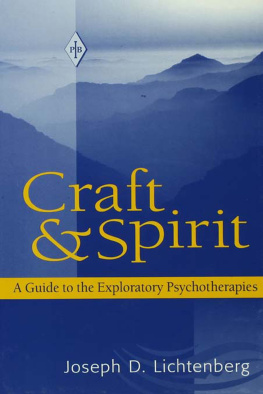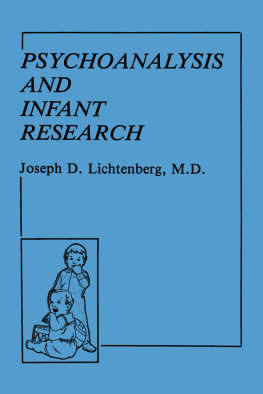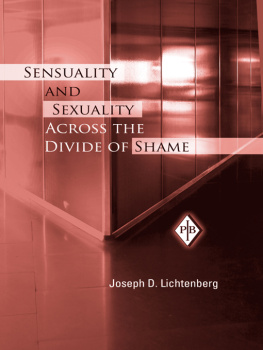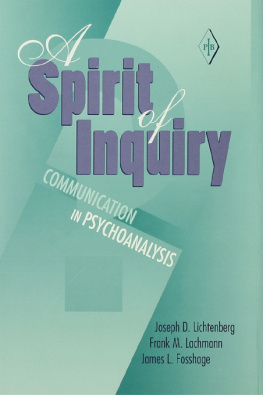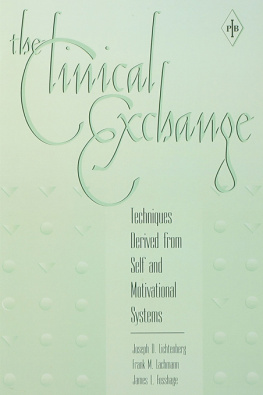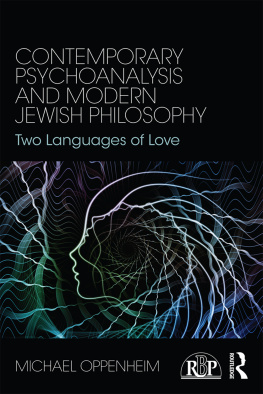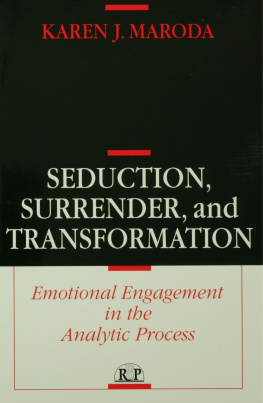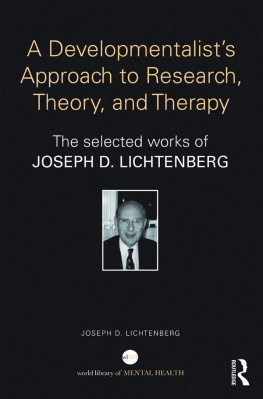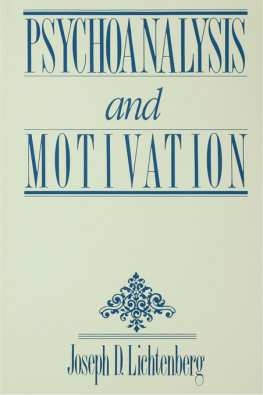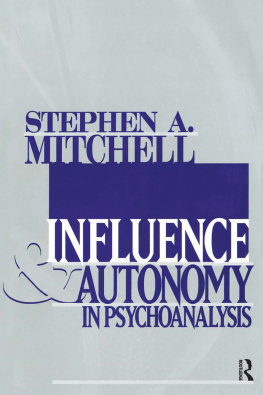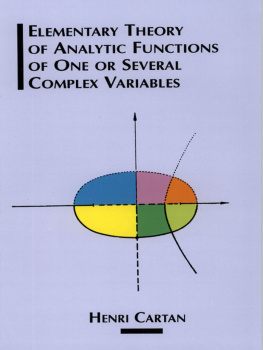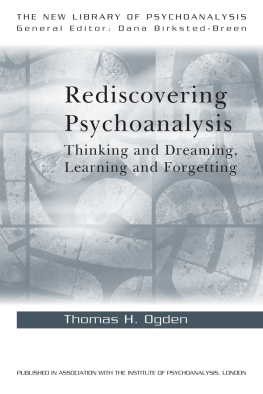Joseph D. Lichtenberg - The Talking Cure: A Descriptive Guide to Psychoanalysis
Here you can read online Joseph D. Lichtenberg - The Talking Cure: A Descriptive Guide to Psychoanalysis full text of the book (entire story) in english for free. Download pdf and epub, get meaning, cover and reviews about this ebook. year: 1985, publisher: Analytic Press, genre: Romance novel. Description of the work, (preface) as well as reviews are available. Best literature library LitArk.com created for fans of good reading and offers a wide selection of genres:
Romance novel
Science fiction
Adventure
Detective
Science
History
Home and family
Prose
Art
Politics
Computer
Non-fiction
Religion
Business
Children
Humor
Choose a favorite category and find really read worthwhile books. Enjoy immersion in the world of imagination, feel the emotions of the characters or learn something new for yourself, make an fascinating discovery.
- Book:The Talking Cure: A Descriptive Guide to Psychoanalysis
- Author:
- Publisher:Analytic Press
- Genre:
- Year:1985
- Rating:3 / 5
- Favourites:Add to favourites
- Your mark:
- 60
- 1
- 2
- 3
- 4
- 5
The Talking Cure: A Descriptive Guide to Psychoanalysis: summary, description and annotation
We offer to read an annotation, description, summary or preface (depends on what the author of the book "The Talking Cure: A Descriptive Guide to Psychoanalysis" wrote himself). If you haven't found the necessary information about the book — write in the comments, we will try to find it.
Joseph D. Lichtenberg: author's other books
Who wrote The Talking Cure: A Descriptive Guide to Psychoanalysis? Find out the surname, the name of the author of the book and a list of all author's works by series.
The Talking Cure: A Descriptive Guide to Psychoanalysis — read online for free the complete book (whole text) full work
Below is the text of the book, divided by pages. System saving the place of the last page read, allows you to conveniently read the book "The Talking Cure: A Descriptive Guide to Psychoanalysis" online for free, without having to search again every time where you left off. Put a bookmark, and you can go to the page where you finished reading at any time.
Font size:
Interval:
Bookmark:

THE TALKING CURE
A Descriptive Guide to Psychoanalysis
THE TALKING CURE
A Descriptive Guide to Psychoanalysis
Joseph D. Lichtenberg, M.

Copyright 1985 by Joseph Lichtenberg.
All rights reserved. No part of this book may be reproduced in any form, by photostat, microform, retrieval system, or any other means, without the prior written permission of the publisher.
First published by The Analytic Press, Inc.
365 Broadway, Hillsdale, New Jersey 07642
This edition published 2012 by Routledge
| Routledge | Routledge |
| Taylor & Francis Group | Taylor & Francis Group |
| 711 Third Avenue | 27 Church Road, Hove |
| New York, NY 10017 | East Sussex BN3 2FA |
Library of Congress Cataloging-in-Publication Data
Lichtenberg, Joseph D.
The talking cure.
Bibliography: p.
1. Psychoanalysis. 2. Psychotherapy. I. Title.
RC506-L524 1985 616.8917 84-24372
ISBN 0-88163-008-X (hc)
ISBN 0-88163-192-2 (pbk)
Contents
Acknowledgments
My greatest debt is to my analysands, who have both taught me and learned with me to our mutual benefit. The list of teachers and colleagues who imparted their wisdom to me is too long for a prefatory statement. Here I shall single out only Lewis Hill, who taught me that what one does as an analyst is important, but what one is as a person is basic; Heinz Hartmann, whose elegance as a thinker provided a foundation for integrating scientific thought with humanistic sensibilities; and Heinz Kohut, whose revitalization of the concept of empathy has inspired my approach to the analysts task. A number of colleagues have been unfailingly patient and helpful in responding to my ideas: the late Ping-Nie Pao, Evelyne Schwaber, Ernest Wolf, Warren Poland, Morris Oxman, John Gedo, Melvin Bornstein, Donald Silver, and Jeanette and Nathan Miller. Ann Lichtenberg assessed an early draft of the manuscript to assure its relevance to young professionals. For critical commentary on select chapters, I am indebted to Charlotte Lichtenberg, Rosalie Schonbar, Arthur Malin, and Morton and Estelle Shane. Lawrence Erlbaum, publisher and friend, gave a lift to this project when I needed his faith in order to persevere. Susan Shrader and Paul Stepansky converted the manuscript into a book. But, most importantly, The Talking Cure bears the stamp of its editor, Susan Heinemann. With her exquisite sensitivity to the readers need for clear explanations and accessible examples, she greatly aided me in the challenging task of saying complicated things in simple English. To the extent that my penchant for formal psychoanalytic discourse has been softened into conversational prose, it is largely owing to her skillful efforts.
The Talking Cure speaks my advocacy of psychoanalysis. On the basis of my more than 30 years of involvement with analysis and psychiatry, I firmly believe that the psychoanalytic experience, when successfully engaged by analyst and analysand, leads to uniquely beneficial changes: the relief of distress through the opening of new possibilities for freedom in ones feelings, ones thinking, and ones capacity for human relationships. As in any other field of organized scientific endeavor, controversies abound with respect to methods, theories, results, and jurisdictions. I mention most of these issues in this work, but do not dwell on them beyond the needs of the lay reader. The picture of analysis that I draw is thus a general one, a kind of nonpolemic consensus to which, I believe, the majority of analysts would subscribe. At the same time, The Talking Cure is a highly personal statement, since it derives largely from my own experience as analysand and analyst, student and teacher, listener and guide.
Joseph D. Lichtenberg, M.D.
A Historical Note: The Talking Cure
In the nineteenth century the world was turned upside down by two discoveries. The first began in 1831, when the young Charles Darwin set forth on a five-year surveying expedition on the Beagle. The surprising outcome of this voyage to the Pacific was the series of brilliant observations that led to the theory of evolution. The second discovery began under more prosaic circumstances. Between 1880 and 1882, Josef Breuer, a prominent Viennese physician, paid daily visits to a bright, vivacious twenty-one-year-old woman who had fallen ill with hysterical symptoms. What was extraordinary about Breuers venture into Anna O.s world of hysterical fantasies was his approach: he let her talk freely about her sensations, fantasies, and thoughtsand he listened. Commenting on the remarkable improvement in her condition that resulted, Anna O. aptly described this procedure, speaking seriously, as a talking cure, while she referred to it jokingly as chimney-sweeping. When related later to the young Sigmund Freud, this unprecedented treatment of a neurosis became the observational spark for the discovery of psychoanalysis.
J. Breuer and S. Freud, Studies on Hysteria (1893-95). In: The Standard Edition of the Complete Psychological Works of Sigmund Freud, vol. 2, trans. J. Strachey (London: Hogarth Press, 1955), p. 30.
Introduction
Psychoanalysis aims to relieve emotional distress and improve mental functioning. So do other forms of therapy. Yet psychoanalysis offers a unique experience. How can one describe that experience? In some sense, an experience can never be fully described; it has to be sensed, felt, endured, enjoyedlived. Still, one may approximatedrawing in the contours, keying the main features, offering the traveler a guide to the land he or she is interested in.
The analogy between psychoanalysis and a journey is in fact a common one. A venture into the unknown of the psyche, a voyage of self-discovery, an archaeological exploration of the residues of the pastall these metaphors have been used to evoke the psychoanalytic experience. There is a sense of anticipation, of the excitement of discovery, but also a tinge of apprehension, the fear of becoming disoriented or lost in traveling into an unfamiliar land. A guide may be helpfulto assure greater success in the exploration and to reassure against losing ones way.
Where does one begin? A large part of this book is designed to guide a person whose knowledge of psychoanalysis is limited. The initial chapters focus on the path to psychoanalysis of someone who seeks help because of emotional pain, a confused sense of purpose, or other problems. How, for instance, does one decide on psychoanalysis as a treatment? Who and what is an analyst? How does one find one? Later chapters explore the psychoanalytic experience itselfa more difficult terrain to penetrate. Volumes have been devoted to a scientific conceptualization of the psychoanalytic experience. Even a preliminary description requires some density, given the complexity of the subject.
Different travelers have different needs. Imagine a group of people interested in visiting a foreign land. Some might say: I dont know much about this country; tell me about it. What are its major attractions? Its unique features? Its costs? Others might ask different questions, commenting: I know most of that already. What I want to know is: what really goes on there? If I visit this land, how can I be sure to get the most out of my trip? What kinds of problems might I encounter? And how do you deal with them?
This guide is directed toward two groups of readers. The first group is prospective analysands, who want information to determine if the psychoanalytic method is one from which they can expect to benefit. What will analysis do for their problems, for the dissatisfaction and pain they suffer from? How will their thoughts and feelings be responded to? Before embarking on this journey, people may want to feel some certainty that they can fit in with the requirements of analysis. And they may want some assurance that their most private hopes and fears will be dealt with respectfully within a goal of beneficial change.
Next pageFont size:
Interval:
Bookmark:
Similar books «The Talking Cure: A Descriptive Guide to Psychoanalysis»
Look at similar books to The Talking Cure: A Descriptive Guide to Psychoanalysis. We have selected literature similar in name and meaning in the hope of providing readers with more options to find new, interesting, not yet read works.
Discussion, reviews of the book The Talking Cure: A Descriptive Guide to Psychoanalysis and just readers' own opinions. Leave your comments, write what you think about the work, its meaning or the main characters. Specify what exactly you liked and what you didn't like, and why you think so.


